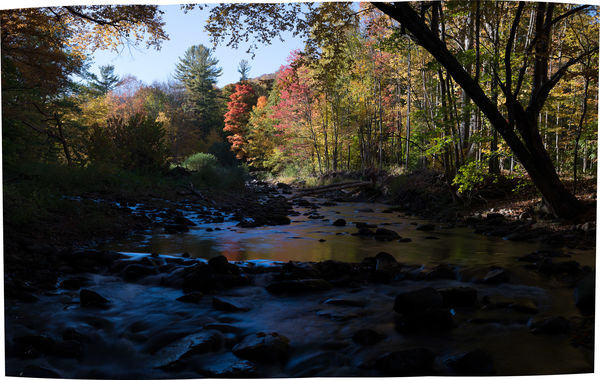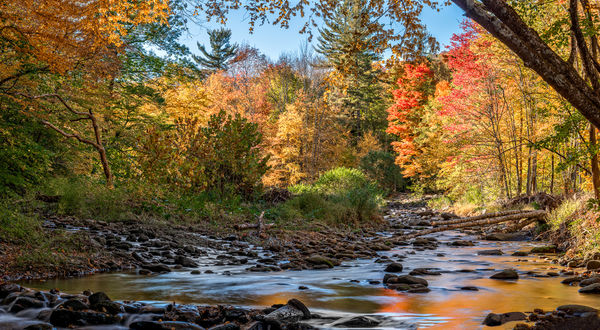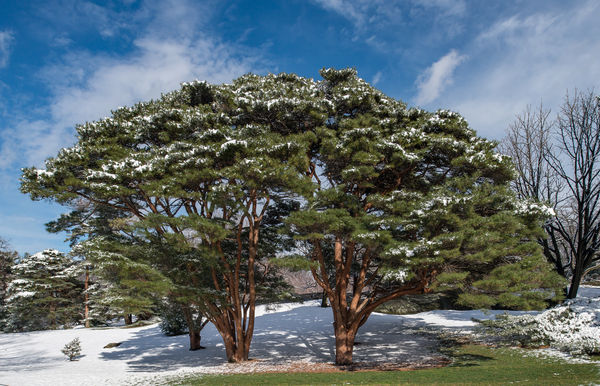Landscape Lens
Mar 14, 2017 07:42:17 #
John Howard wrote:
Last week I started a thread on this subject tryin... (show quote)
I like to go by reviews on B+H and compare with price in mind. I got the 28mm Distagon.
https://www.bhphotovideo.com/c/product/662715-REG/Zeiss_1771_844_28mm_f_2_0_Distagon_T.html
Mar 14, 2017 07:44:14 #
Gene51 wrote:
With full frame I have used everything from 14mm to 600mm for landscapes - so I can totally agree. However, my 45mm is my go to for most of my landscape work.
Here are some examples made with 3 to 5 shot pano stitches using the 45mm, except for the last which was done with an 85m - all taken with a D800.
Here are some examples made with 3 to 5 shot pano stitches using the 45mm, except for the last which was done with an 85m - all taken with a D800.
Great work.
Mar 14, 2017 07:51:51 #
billnikon
Loc: Pennsylvania/Ohio/Florida/Maui/Oregon/Vermont
John Howard wrote:
Last week I started a thread on this subject tryin... (show quote)
For landscape I use a Nikon D810 and a Nikon 16-35 F4 lens. Works perfect for me.
Mar 14, 2017 08:01:38 #
Mar 14, 2017 08:03:45 #
billnikon wrote:
For landscape I use a Nikon D810 and a Nikon 16-35 F4 lens. Works perfect for me.
Have you tried doing pano with the longer end rather than a single shot with the shorter focal length?
Mar 14, 2017 08:07:26 #
Gene51 wrote:
With full frame I have used everything from 14mm to 600mm for landscapes - so I can totally agree. However, my 45mm is my go to for most of my landscape work.
Here are some examples made with 3 to 5 shot pano stitches using the 45mm, except for the last which was done with an 85m - all taken with a D800.
Here are some examples made with 3 to 5 shot pano stitches using the 45mm, except for the last which was done with an 85m - all taken with a D800.
Beautiful stuff! Care to share the techniques you used for the second shot?
Mar 14, 2017 08:24:00 #
For landscapes where I want the expanse of the scene to be expressed, I use a Nikon 14-24mm f/2.8; for all others, I use my standard Nikon 24-70mm f/2.8.
Mar 14, 2017 08:40:16 #
Gene51 wrote:
With full frame I have used everything from 14mm to 600mm for landscapes - so I can totally agree. However, my 45mm is my go to for most of my landscape work.
Here are some examples made with 3 to 5 shot pano stitches using the 45mm, except for the last which was done with an 85m - all taken with a D800.
Here are some examples made with 3 to 5 shot pano stitches using the 45mm, except for the last which was done with an 85m - all taken with a D800.
These are beautiful.
Mar 14, 2017 08:43:24 #
John Howard wrote:
Last week I started a thread on this subject tryin... (show quote)
If I had only one landscape lens for a full frame it would be the 20mm.
Mar 14, 2017 08:54:27 #
DStone wrote:
Beautiful stuff! Care to share the techniques you used for the second shot?
Thanks!
1. I found the one rock in the middle of the stream that was large enought to keep my boots above water.
2. Took a single shot with my 24mm. liked the composition, didn't care for how distant the brightly colored trees were in the distance.
3. Decided to try 2 panos, one with my 85, the other with the 45. I needed a little tilt (betwwen 1 and 2 degrees) which I assessed in Live View to get improved DoF without needing to resort to smaller than F11
4. I exposed for the highlights in the distant trees, using the camera's spot meter. I wanted to show some water movement, but not silky smooth, so wanted .8 sec (could have been 1 sec, but not longer than 1.5. I took out my ND 32 so I could use ISO 100, because the foreground was in deep shadow under tree canopy, and the light was completely blue skylight.
5. I leveled the tripod, then leveled the camera (I used a video leveling bowl on the tripod and a ball head for this - easy enough to do once you've done it a few times). Shot 5 images, camera in portrait orientation, overlapping each previous image by 50%
Below is the stitched uncropped and unedited version.
I did some very little cropping, then in Lightroom, I used a linear gradient to lighten and desaturate the foreground, and at least 6 more radial gradients to adjust color saturation, brightness and clarity for the reflection in the water in the center of the image, the rocks on the left, the small tributary stream on the left, etc etc. I then opened the image in On1 10 to apply some dynamic contrast to enhance the overall sharpness of the image, and applied a "fall colors" preset filter at about 40% to bring out some of the color. The stitched image is 11,301x7158 pixels.
I also attached the one I did with the 85mm for comparison. I used 12 shots for this one, but I two shots per frame with exposure bracketing to get six HDR merged images - then I stitched those together. I did it a little bit later which accounts for the change in light.
You can see why I don't feel a need to shoot landscape with anything wider than 45mm most of the time.
The last image was a single shot with a 24mm. It works because there are no foreground elements that would appear disproportionate to the rest of the image. I used about 9 mm of vertical shift, since there was not a lot of room to get all the trees in, it was cold and windy and I was lazy, not wanting to change my lens or set up a pano.
Based on my search of over 100,000 images in Lightroom, using search term "landscape" the one I use most is the 45. But I also use my 24-70 quite a bit as well, but not as much at the wide end. So if I only had one lens, it would be the 45 for sure.
Mar 14, 2017 08:56:38 #
John Howard wrote:
Last week I started a thread on this subject tryin... (show quote)
I have a Tamron (wish I had gotten the Nikon but it was a gift from the wife) 10-24mm, and a Nikkor 18-70mm that I use for landscapes. They work pretty good. I use them (mainly) for real estate photography.
Mar 14, 2017 09:00:24 #
Gene51 wrote:
With full frame I have used everything from 14mm to 600mm for landscapes - so I can totally agree. However, my 45mm is my go to for most of my landscape work.
Here are some examples made with 3 to 5 shot pano stitches using the 45mm, except for the last which was done with an 85m - all taken with a D800.
Here are some examples made with 3 to 5 shot pano stitches using the 45mm, except for the last which was done with an 85m - all taken with a D800.
Very nice. Looks like Central Park.
Mar 14, 2017 09:03:38 #
Is there really a RIGHT lens? Excellant landscape photos may be taken with lens from 20 to 600mm.
Mar 14, 2017 09:05:24 #
Gene51 wrote:
Thanks! br br 1. I found the one rock in the midd... (show quote)
Appreciate your taking the time to explain the process. Very good.
Mar 14, 2017 09:13:32 #
John Howard wrote:
Last week I started a thread on this subject tryin... (show quote)
I use Prime fx 50mm. 1.8.
If you want to reply, then register here. Registration is free and your account is created instantly, so you can post right away.












